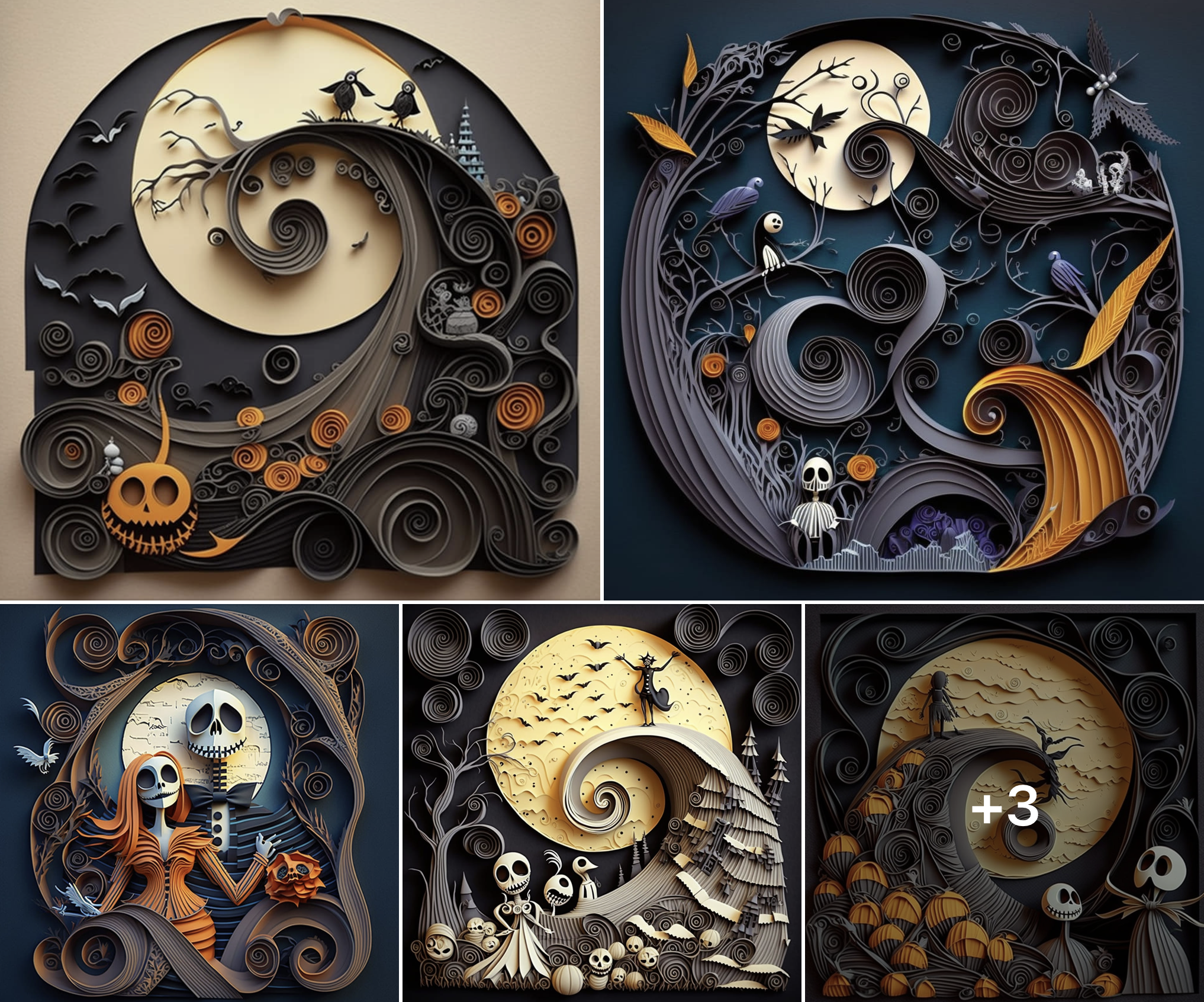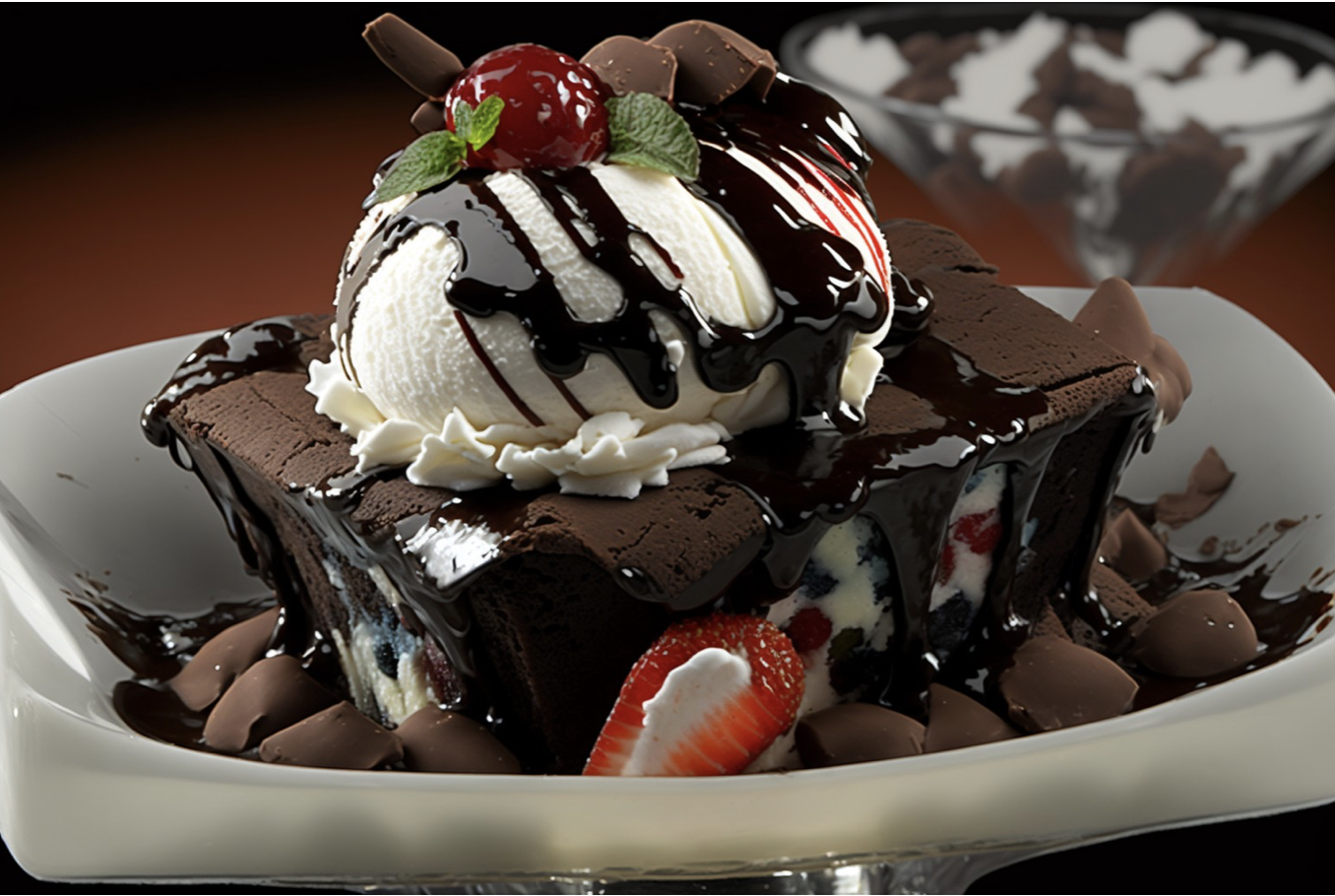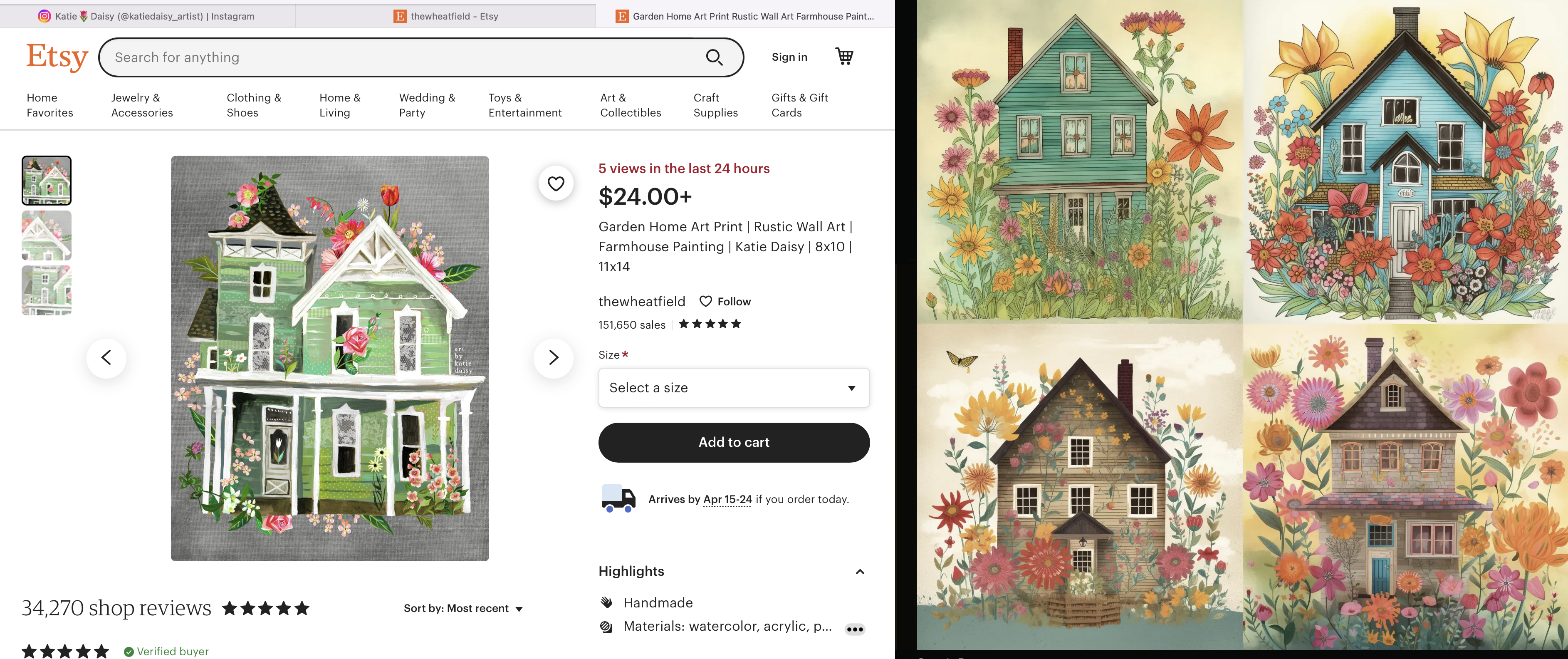The more I see of it, the more I am understanding how AI (artificial intelligence) will change the fields of writing, art, and all creative fields in a profound way. I’ll share examples below of what I’ve been seeing, but my first goal today is to make this essay useful to you. If you are a writer or creator who already felt that it was difficult to thrive with your creative work, I want to share specific ways that I feel you can find success and connection with your audience, even as AI reshapes your field. Let’s dig into 8 steps to do so:
Step #1: Double-down on human connection.
For how you share what you create, instead of first focusing on content (a website, a video, a status update, an image), focus first on meaningful connections to other human beings. As AI makes content creation even easier, even terrifyingly easy at times, human connection is the thing that will still be slow, deeply meaningful, and last through a myriad of changes and disruptions. I mean, there are people on Facebook that I’m connected with that I haven’t seen in-person in 40 years, but I read every one of their updates, I donate to causes that matter to them, and I share words of celebration and compassion when needed. All because we sat next to each other in 3rd grade. Human-connections last.
Tip #2 Develop professional relationships.
You should have colleagues. People who do work similar to yours. If you don’t have three people in your life who you can text right now, who can relate to what it is like to create work similar to yours, then I encourage you to find those people. Why? Because it is difficult to create and share. Having someone you can text when you want to celebrate, when you want to cry, when you have questions, when you just want to not be so isolated — is life changing. These people don’t need to be your best friends. You don’t need to buy them birthday presents. These should be professional colleagues. When there is great change, it can be powerful to come together with others.
Tip #3 Develop the craft of communication and trust.
How we communicate is how we live, how we make up our days, how we relate to each other, how we feel heard, how we hear others. How we communicate is a craft. Actively work on developing this. What makes people remember you, follow you, pre-order your book, tell a friend? Trust. And trust takes time to develop. Start now.
Tip #4 Focus on empathy and outreach.
Maybe you feel you don’t have any professional relationships, and no access to anyone. Fine. We all start there. Reach out to those who inspire you. That can be a small moment via email, direct message, or comment. But it can also be bigger. What do you say? Start with empathy. Consider what they are sharing and why, and validate that. Show up for it. Let them know they are heard. For so many people, their biggest dream in life is to simply feel heard. You have the power to give them that gift. Use it.
Tip #5 Share the story behind the story.
Establishing personal boundaries in what you will share is critically important. But I find that too many writers and creators arbitrarily place a boundary at “I will just share book news” and nothing else. But people want to be a part of your journey. They want to understand what drives you. We see this all the time in what engages people. For example, when you watch the Olympics, there are all these little films illustrating the journey that got someone to the curling rink. It’s not only a professional story, it’s a personal story. Share the story behind what you create. The story behind AI is about technology. But your story can go to millions of other meaningful places. Leverage that.
Tip #6 Ignore trends and “best practices.”
Do you feel overwhelmed by trends and all the lists of things you are told you “have to” do? Ignore them. (well, ignore them all except this list.) Too many writers and creators play it safe, waiting until others have firmly established “best practices” for how to share about your creative work. The problem? By the time something is a “best practice,” it is being copied by thousands of people, usually in the most mediocre ways. What to do instead? Lean in to what makes you you. AI will surprise us in a myriad of ways. What if you surprised us too?
Tip #7 You can’t make everyone happy, don’t bother trying to.
I have found that possibilities open up, and anxiety is released when you stop trying to please everyone with what you create and how you share. Don’t measure your success by how many likes, how many followers, how many of anything you receive. The numbers game is difficult and fickle. Instead, go for depth. See if you can connect deeply with one person this week; inspire one person; or simply make one person feel seen.
Tip #8 Storytelling is a human-focused craft. Embrace it completely.
Not just in your fiction/memoir/nonfiction, but in how you share who you are. How you share your experiences in the world. How you share those who are a part of your life. How you share inspiration. There is a difference between saying, “Oh, I love the music of Prince” vs saying, “Want to know what drives me? Let me tell you about a day I had in sixth grade where everything went wrong. Wrong with friends, wrong at school, wrong with family, and where I felt truly alone in the world. But then this song came on by Price. What happened next changed me…”
I watched the 1971 film Willy Wonka & the Chocolate Factory with my 6 year old for the first time recently. In it, Willy Wonka quotes the poem “Ode” by Arthur O’Shaughnessy:
We are the music makers,
And we are the dreamers of dreams
I don’t know the full meaning of the entire poem, I’ve only read it a handful of times, but in rereading it now, I am drawn to the final lines:
You shall teach us your song’s new numbers,
And things that we dreamed not before:
Yea, in spite of a dreamer who slumbers,
And a singer who sings no more.
You are the music maker. AI is a tool that will exist and reshape creative fields whether you use them or not. But you — YOU — are the storyteller.
Of course, all of this is baked into how I view the ways that writers and creators share; why I use the phrase Human-Centered Marketing so much; why I have the Creative Success Pyramid as a model for creators to follow; and in how I work with writers and creators. But let’s talk more about the new reality that creative work will exist within because of AI…
Why AI Will Reshape Writing, Art, and Other Creative Fields
Every week I am seeing new examples of what AI can already do, with implications that reshape our understanding of how creative work can be made, shared, and sold. Below I will be referencing the AI writing tool called ChatGPT, and the AI image tool called Midjourney. Let’s start with writing:
- A literary writer I follow talked about using ChatGPT just to riff on ideas. Then does it again and again in order to push her ideas to new places.
- A writer told me that she was preparing the description for a conference workshop she was running, and used ChatGPT to outline some learning objectives it should include. Sure enough, it gave her lots of ideas to include and saved her a ton of time.
- People have used ChatGPT to create interactive stories, including this “interactive text adventure game” from Debbie Ridpath Ohi. If you haven’t yet used ChatGPT, one thing you may not realize is how you can ask it to pretend to be a person or to engage as if in a specific context. Then, you can have a conversation with it, with ChatGPT as the character or narrator. Imagine if you are writing historical fiction and Albert Einstein is a character, and you want help writing dialogue. If ChatGPT knows every published detail of Einstein’s life, could an interactive conversation help you come up with ideas for your book? Maybe.
- Ethan Mollick (who shares extensively about AI) talked about using ChatGPT’s ability to simulate a person in another way. He asked it to pretend it was a successful dentist, then interviewed it about challenges it faces on the job. I can instantly imagine so many ways a writer may do this with characters in their novels, or to understand different roles for nonfiction books they are writing. Would you want to fact check a lot of what the AI says? Of course. But imagine how this can change some of your writing sessions.
- A writer I know who has decades of experience in publicity had ChatGPT write a news release for something and was blown away at how good it was. And of course, how quickly it was created.
- One author told me that she asked ChatGPT to generate a list of topics that should be covered in a book on a theme that she is writing about. It suggested some topics that she had completely missed, so she added it to her outline.
- Author Hugh Howey was musing how we are not too far away from AI being able to write a script for a film, and completely finish the production of that film all within a single day.
What I’m illustrating here is not that AI will write the next bestselling literary fiction novel. It is that AI has the potential to reshape the process of writing in a myriad of nuanced ways, and in turn, reshape the marketplace around writing in profound ways.
In other creative fields, I am seeing even more compelling examples:
An original AI-created song (that people actually liked), which mimicked the voices of Drake and The Weeknd. I mean, just imagine sitting at home and creating 40 songs in an evening all in the style of The Beatles, with 100% convincing voices. Is it The Beatles? Nope. For a Beatles fan might it be fun? For a songwriter, might it be useful? Yes.
Someone shared this AI-generated paper art on the theme of the movie Nightmare Before Christmas:

I mean, I can easily see a fan of this movie buying prints of these to hang in their home. These were created in just a few seconds. Is that legal? Is that ethical? Um, no? But then I have no idea if other fan art that is sold at conventions are legal either. But it makes me consider: when AI can produce millions of these ideas in a day, how does that change the marketplace around fan art?
Here is another post someone shared where they concluded “product photography is dead”

Is that true? I don’t know. But I’m imagining how someone can easily create 100 different versions of a realistic brownie ice cream sundae within a half an hour, and get 90% of the way to what they want for common product photography needs. As AI evolves, I assume there will be a simple way to upload a photo of an actual product you created (like a book!) and create amazing and beautiful product photos in minutes.
One of the most fascinating aspects of what AI may change is the perception of creativity. In the official Midjourney Facebook group someone shared this: “I have never seen such intelligent and creative people in my life. All the art you are creating is amazing beyond my imagination.”
Of course, this is meant to be a compliment. But someone else commented: “This doesn’t require much creativity compared to the original works that Midjourney swipes from.”
Creators have always dealt with this to some degree. For instance: an artist who designs handmade mugs with floral designs, and over the course of years builds up a wonderful business around it. Then, one day she walks into a big box store and sees hundreds of similar knock-offs for sale for 1/16th the price she charges. But with AI, it takes that possibility much further.
I have followed artist Katie Daisy for years, and recently considered if I could recreate the general style of some of her illustrations in Midjourney. Just using prompts, it took awhile to understand how to best direct Midjourney on one component of the illustration or another. But when I simply typed in “illustrated flowers on a drawing of an old house in the style of katie daisy,” it gave me something vaguely similar. On the left is a print that Katie is selling, and on the right are four images Midjourney created based on the prompt:

Is it the same? No. Is it ethical? Maybe not? Does it exist? Yes.
It makes me consider: have you ever read a certain book or kind of story, and could never find another similar story? Maybe it is the context, the characters, the setting, the time period, the universe, the plot. Well, what if you could have AI create thousands of stories that are similar? What if that allowed you to immerse yourself in ideas and characters and worlds that you truly love?
I remember reading the 1970 science fiction book This Perfect Day. It never became a series (that I know of.) So I asked ChatGPT to “write a short story in the style of the book This Perfect Day, by Ira Levin.” In less than 20 seconds, it gave me a 5-paragraph short story that hits all the major beats of This Perfect Day, but with details changed. This is both impressive AND completely unimpressive at the same time. But what if I spent an hour honing this prompt? What if I could save characters, context, and storylines? What if this is a world I could co-create with AI (and Ira’s model for inspiration), and every night, I could create a new chapter to read, and day after day, month after month, it gets better and better?
This begs so many questions about ownership, about art and theft, about reading vs writing, and so much else. But it also illustrates how AI can be a creativity tool, and how lines we feel so comfortable with are blurring.
I do feel that AI will change the marketplace around creative work in big ways. The 8 steps I outlined above are meaningful ways that you can not lose site of what matters most to you, but also navigate changes so that your writing and creative work connects with real people far into the future.
I have written previously about how AI may change writing, art, and creativity here:
Thanks!
-Dan
